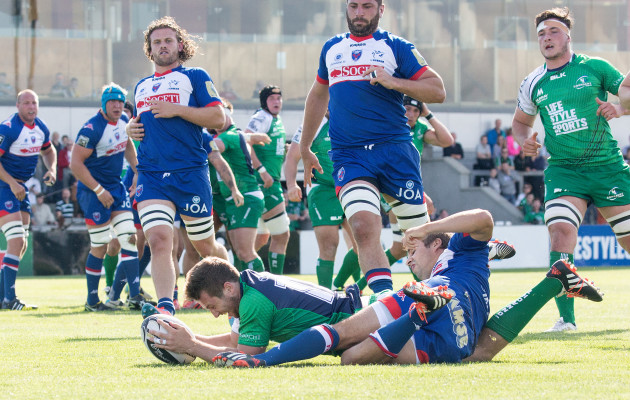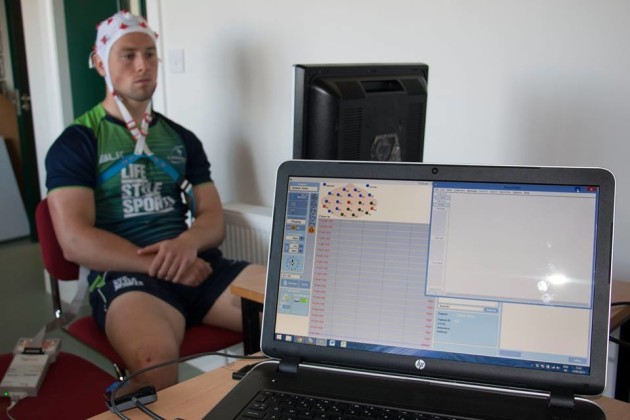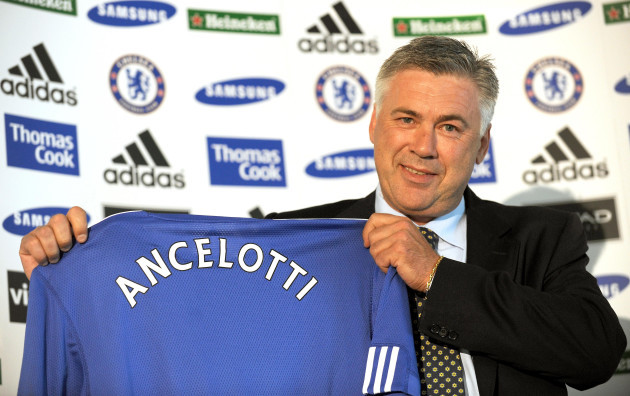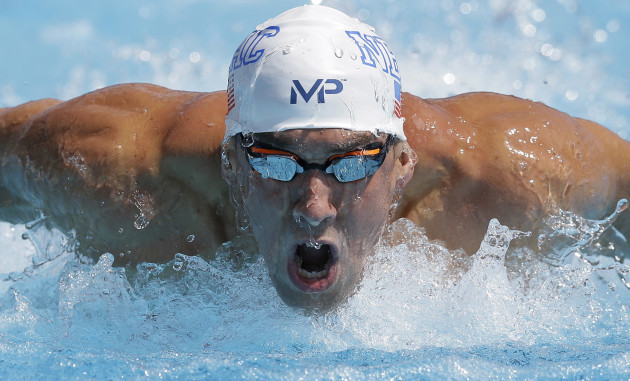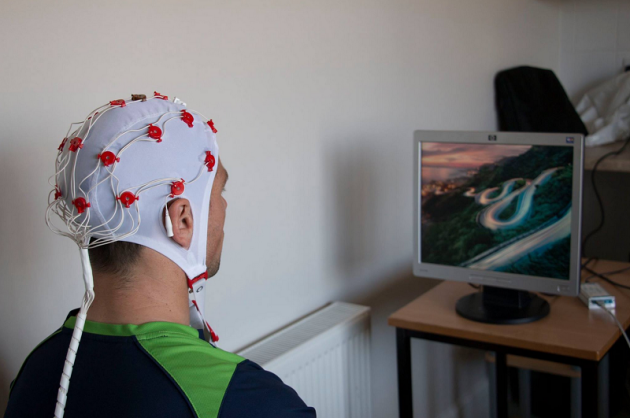JACK CARTY HAS an extraordinary brain.
Or to be more precise, part of the Connacht out-half’s brain operates in an extremely rare and exceptionally positive way at a very specific Hertz (the measurement for brainwave speed).
22-year-old Carty is a man who formerly played minor football for Roscommon, represented Ireland in soccer at U15 and U16 levels, and was invited for trials at Premier League outfit Southampton as a youth.
As an out-half for Pat Lam’s Connacht now, it’s obvious that his ability to process information – space between defenders, teammates around him, the flight of the ball, his position on the pitch – and turn that into an action is integral to his job.
Ideally for Carty, his sensory motor cortex operates at a truly incredible level at 12Hz.
“What he has is the absolute, 100% signature of the expert,” says Dr. Michael Keane, who made this finding when his Actualise firm worked with Connacht players Carty, John Cooney, Matt Healy, Eoin McKeon, Kieran Marmion and Craig Ronaldson last season.
“You will see this in surgeons sometimes,” continues Keane. “Artists might have it, people like that. Jack has it too. It’s the part of the brain that takes in information about sensation in the world and sends a signal forward to the motor cortex.
“We compare him to other men his age who are also experts in rugby – they don’t have it. That doesn’t necessarily make him better or worse. I can’t say whether it’s nature or nurture, but I can say that when I look at his brain, this is a good guy to train because he has this in-built capacity.”
This activity in Carty’s brain is truly rare. More than 99% of men of a similar age and brain health to the Connacht man show nowhere near anything like it. Indeed, it was so exciting a finding that Keane was soon on the phone to colleagues in the US to discuss it.
Actualise, based out of Dublin City University, provide neurofeedback training and have strong, realistic ambitions of becoming a big player in the sports field in Ireland in the coming years.
An hour in the company of Keane at DCU’s Glasnevin campus provides enough learning for weeks, while his enthusiasm for and belief in neurofeedback training is highly contagious.
Essentially, neurofeedback training is a non-invasive and utterly straightforward way of helping a person’s brain to work more efficiently. It’s based on learning, rewarding the brain for doing so, and in the process gaining more control over brain function.
Neurofeedback is used in thousands of clinics and hospitals around the world for a wide range of things like sleep disorders and epilepsy, but Actualise are helping to bring it into a new sphere in tackling peak performance in Irish sport.
“Carlo Ancelotti brought neurofeedback training into AC Milan and then to Chelsea, who still use it,” says Keane, whose qualifications and achievements in the fields of psychology and neuroscience are hugely impressive.
“Abhinav Bindra, India’s first-ever Olympic gold medallist at the 2008 games in the 10m Air Rifle event, used it. The US Olympic Committee uses it and every single athlete representing the US in Rio next year will have done neurofeedback training.”
Using the word ‘straightforward’ earlier perhaps belies the deep, deep reams of data Keane and his six Actualise co-workers gather and analyse, but the actual practical process for the player undergoing neurofeedback training couldn’t be any easier.
An initial consultation will highlight mental areas the player wants to improve, be that anxiety before games, concentration levels, communication, or the ability to move on quickly from errors rather than overcompensating, for example.
Next, the player is measured for their EEG (electroencephalogram) baseline by placing an EEG cap fitted with sensors onto their head. Those 19 sensors take a reading of the player’s brain activity based on the electrical signals, providing data with which Keane and his team carry out a normative database comparison.
We compare their brain and their data to other brains like theirs which are considered to be healthy,” says Keane. “We go through the data and can see the differences on cross-section images of the brain.
“So for example, we can say ‘Look at this brain area here, we know that this brain area is related to anxiety and we can see it’s over-active.’
“If you can turn that down a little bit, you reduce the anxiety reflex and the person gains more control over that psychological principle. That’s the basic fundamentals of what we’re doing.”
Clearly, Actualise wouldn’t want to bring about any change in Carty’s ability to process and react to sensory information, but in other elements that any player does want to change, they can help.
The actual training portion of the neurofeedback approach involves sitting and watching a DVD or listening to a CD of the player’s choice with the EEG cap on. The DVD will then start and stop based on the subject’s brain function.
Crucially, that starting and stopping is completely related to the specific parts of the brain that are tied to the behaviour the player wants to change and gain more control over.
“It’s only related to what we have decided you need to change for those psychological factors you wanted to be more efficient with,” says Keane.
So for the player who wants to communicate more effectively under pressure, their DVD will start playing when the neural activity in their brain relating to strong communication skills is working in an efficient manner. Less efficient and the DVD stops.
At first this happens randomly, but spurred on by the reward of the DVD starting again, the brain relishes a new shot of dopamine and looks for another reward, gradually moving towards the control towards being a conscious thing.
“If you’ve ever trained a puppy, it’s exactly the principle,” says Keane. “He’s randomly going around the place and he sits and you race over and give him a treat. Or he pees on the paper, not the floor, and you give him a treat.
“What’s the effect of that? The behaviour that led to the treat is now a little bit less likely to be random and is slightly more likely to happen again.
“Our player is watching this video, it’s on their screen and the only way they can make that video play is by making brain function move towards that ‘Z score.’ It’s the only way you can do it.
“It happens randomly at the beginning, like the puppy. We make it so easy that the video will be turning on and off, on and off. When the brain function is moving in the wrong direction, it begins to disappear.
“Over time, in 99% of cases, we can successfully start moving the threshold in, because people’s brain function is being rewarded in that direction constantly. It’s called reducing the deviance or increasing the efficiency.
“What happens is that, after maybe five or six sessions of one hour, people can begin to consciously control the switching on and switching off of the video. What they’re doing is consciously controlling their brain activity, which is incredible!
If you can control that, then you’re actually having that knock-on effect on behaviour as all of those metrics are related to what you want to work more efficiently . So now you’re gaining some conscious control of the switching on and switching off of that function.”
The target mark is based on the concept of normal distribution, so any over-activity or under-activity in these specific parts of the brain are brought towards the ‘Z score,’ which is the average activity for the brains of people of a similar age.
This is far from a personality-altering intervention, Keane underlines: “The worst thing that can happen is that nothing happens. We’re not changing personalities, it’s just about gaining that little bit more control.”
The feedback for Actualise from Connacht’s players last season was extremely positive, and Keane has utter certainty that neurofeedback training is the way of the future for sports psychology.
One of the most intriguing parts of working with Connacht was that as the players made improvements in a whole range of areas specific to their own requirements, they also showed slight flickers of that same activity Carty has for processing and reacting to sensory information.
“If I said to you that we could create that particular brain activity, I’d be a millionaire in the morning,” says Keane with a laugh.
“But what is happening – this is my theory – is that as all the other brain areas work more efficiently, there’s more resource available and, with these guys practicing all day with the ball, this begins to grow. This sensory motor expertise is being trained with more resource all of a sudden.”
Part of the appeal for rugby players, and generally in the field of peak performance, is that Actualise can scientifically underline the progress that has been made, whether that’s over the course of a one-hour session or weeks of training.
The clarity for a player in looking at scans of their own brain, noticing how the targeted improvements in efficiency have truly happened, provides something that traditional sports psychology interventions perhaps can’t.
“Players respond to this,” says Keane. “We can show them ‘this is where you were, this is where you are.’ Everything in sport is measured in this way now, from running to lifting, so on. It’s clinical work and no one has to take our word for it, it’s clearly there for them to see.
“When you see that progress, part of the process becomes the player saying ‘I am doing well’ and the ball is bouncing forward.
“One of the big selling points for players is that you’re not going to talk to a person because there’s something wrong. It’s not about that, it’s about peak performance. There’s no right or wrong, it’s just deviance. We can make it more efficient.”
While Actualise continue to offer neurofeedback training for a whole range of issues outside of rugby, Keane and his sport-loving colleague Cathal Ryan believe that sport is the perfect area for growth.
For one, the players make their work a whole lot easier.
“Sportspeople are perfect,” says Keane. “They come in in their shorts and singlet, work with us and then go straight back out to training. They can then practice what they learned in their neurofeedback session and it’s reinforced.
“The Connacht guys were on time, really into it and didn’t question it. It made our lives so much easier. They were ready to go every time we arrived in Galway.
“It’s almost like learning the piano. We brought the players in twice a week, helped them to gain some conscious control of brain function, but it’s no good unless it translates into behaviour. We helped them with the brain training and then they go and practice.”
“Their competitiveness came out and they wanted to beat themselves and each other, because they’re motivated. You obviously can’t compare one player to another because they’re training different brain areas, so you’re comparing apples with oranges, but we’d hear them asking each other what threshold they got to!”
Actualise have submitted a proposal to Connacht to work more extensively with the players this season, while they have held highly positive discussions with a major rugby union too.
In a sporting sphere where marginal gains have become an obsession, Keane and his Actualise team are likely to be greatly in demand in the coming years.
Rugby is very interesting because Irish rugby players might not always be the biggest or strongest, but we can be the smartest,” says Keane. “I’m certain that this is the way of the future. What else do you do with a 6ft 5ins giant?
“The next step is decision-making and making better decisions than the other guy, being mentally better than the opposition. The margins are so fine and the higher up you go they are even smaller.
“The Connacht players did 20 hours total and some were noticing a difference after just a few sessions. The guys we were working with played incredibly well in that Champions Cup qualifier against Gloucester last season, for example.
“I’m not saying that it was all down to this, but if it was 1% down to this, that’s the difference these rugby players are after.”
